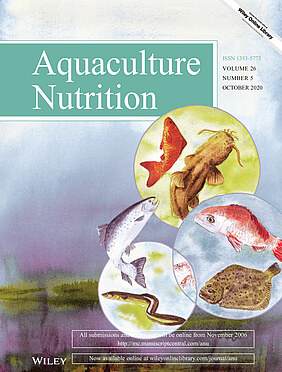Abstract
A study was carried out to examine and optimize the inclusion levels of shrimp hydrolysate (SH) or tilapia hydrolysate (TH) in low fishmeal diets for olive flounder (Paralichthys olivaceus). A fishmeal (FM)-based diet was considered as a high FM (HFM) diet, and a diet containing soy protein concentrate (SPC) as a FM replacer at 50% substitution level was regarded as a low FM (LFM) diet. Six other experimental diets were prepared by dietary supplementation of SH or TH to LFM diet at different inclusion levels of 15 g/kg, 30 or 45 g/kg in the expense of FM (designated as SH-1.5, SH-3.0, SH-4.5, TH-1.5, TH-3.0 and TH-4.5, respectively). After 10 weeks of a feeding trial, growth performance and feed utilization efficiency of fish were significantly higher in fish fed HFM, SH-3.0, SH-4.5, TH-1.5 and TH-3.0 diets compared to those of fish fed LFM diet. Intestine diameter, villus height and goblet cell counts of fish were significantly increased by dietary inclusion of SH or TH into LFM diet. Dry matter and protein digestibility of diets were significantly improved by SH or TH incorporation. Innate immunity of fish was significantly enhanced by dietary SH or TH supplementation into LFM diet. Disease resistance of fish was significantly increased against Edwardsiella tarda by dietary inclusion of SH and TH at the highest inclusion level (45 g/kg). The optimum inclusion level of SH or TH in a SPC-based LFM diet could be ~30 g/kg and 15–30 g/kg, for olive flounder.

